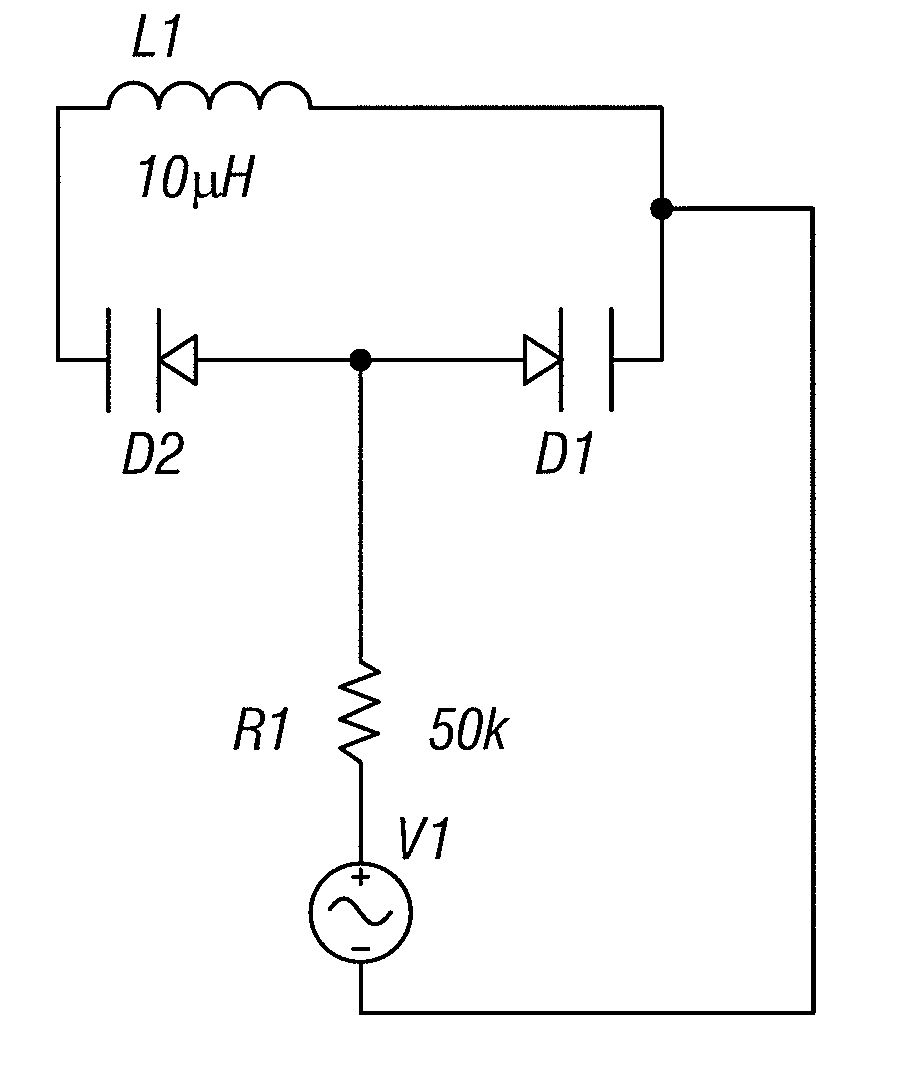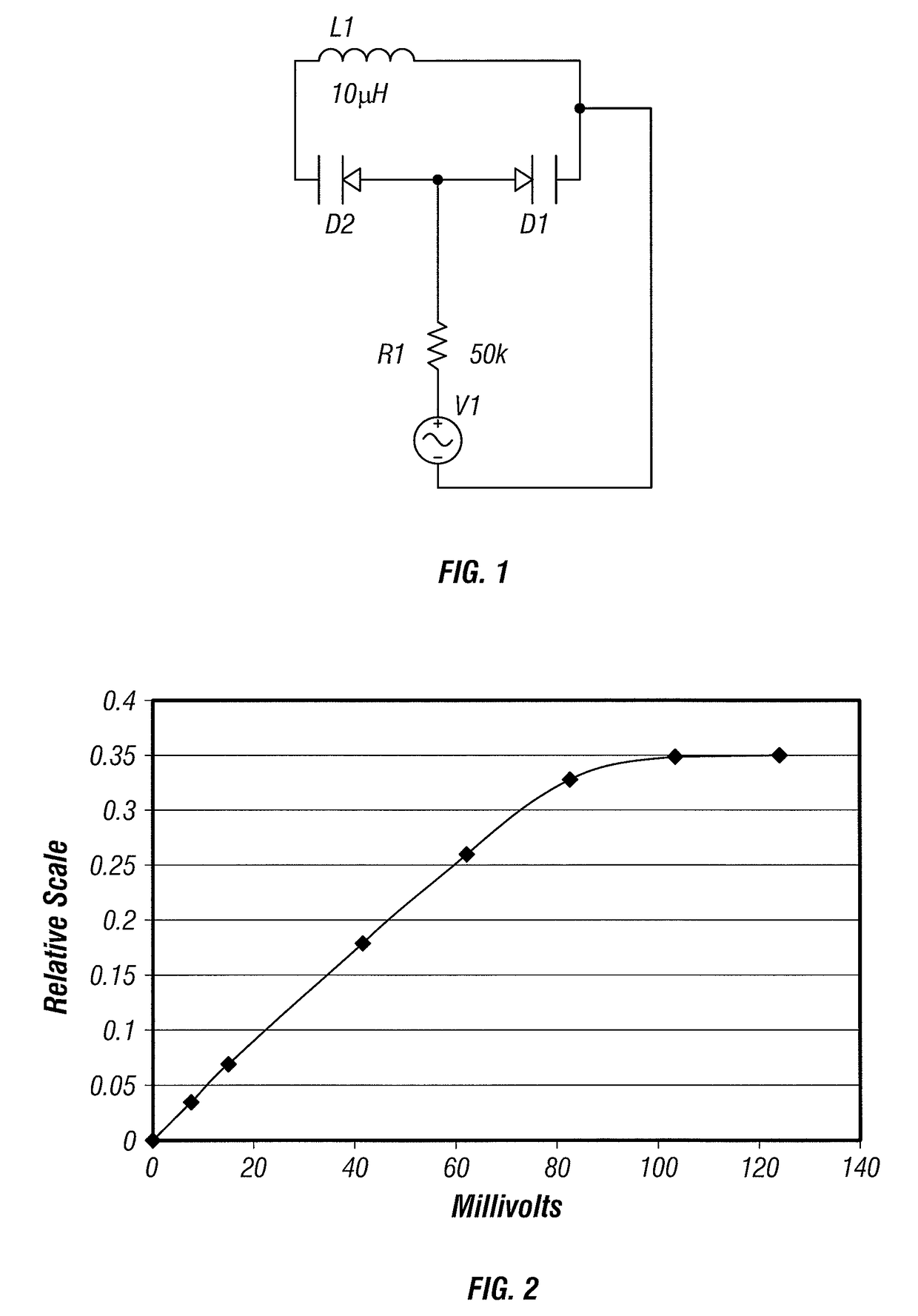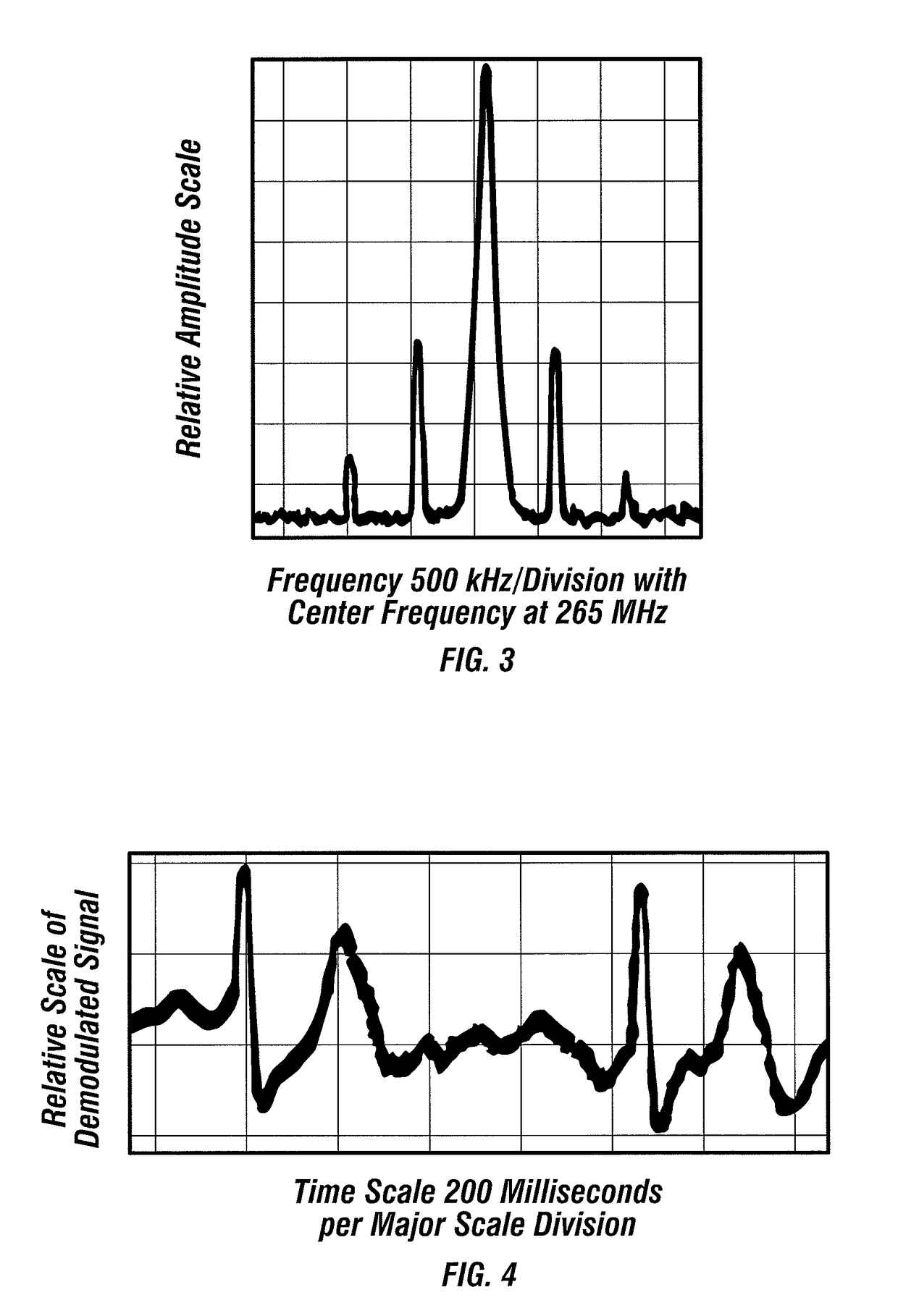Systems and methods for wireless transmission of biopotentials
a bioelectrical signal and wireless transmission technology, applied in the field of biomedical engineering, can solve the problems of reducing the size of telemetry circuits to such small sizes, requiring relatively complex circuitry, and undesirable use of body-invading wires to carry outside such signals from inside living things. , to achieve the effect of reducing the trauma of such introduction
- Summary
- Abstract
- Description
- Claims
- Application Information
AI Technical Summary
Benefits of technology
Problems solved by technology
Method used
Image
Examples
Embodiment Construction
[0069]This invention relates to the field of radio communication devices that use the coupling of tuned electrically resonant circuits to carry information between a remote unit and a base station. In one embodiment, a remote unit is of an electrically passive design containing no batteries and deriving its power needs from the incoming radio frequency carrier wave. This allows the manufacture of biopotential communication devices that have small size and potentially long lifetimes. Since there are no batteries to wear out, they are suited to tasks such as wireless telemetry of bioelectrical and sensor data from small physical or chemical sensors implanted in the body of humans or other living things.
[0070]Certain embodiments of the invention employ the principle whereby small voltages applied to resonant circuits constructed with voltage variable capacitances will shift resonant frequencies by a small percentage amount of the resonant frequency. At high operating frequencies in the...
PUM
 Login to View More
Login to View More Abstract
Description
Claims
Application Information
 Login to View More
Login to View More - R&D
- Intellectual Property
- Life Sciences
- Materials
- Tech Scout
- Unparalleled Data Quality
- Higher Quality Content
- 60% Fewer Hallucinations
Browse by: Latest US Patents, China's latest patents, Technical Efficacy Thesaurus, Application Domain, Technology Topic, Popular Technical Reports.
© 2025 PatSnap. All rights reserved.Legal|Privacy policy|Modern Slavery Act Transparency Statement|Sitemap|About US| Contact US: help@patsnap.com



